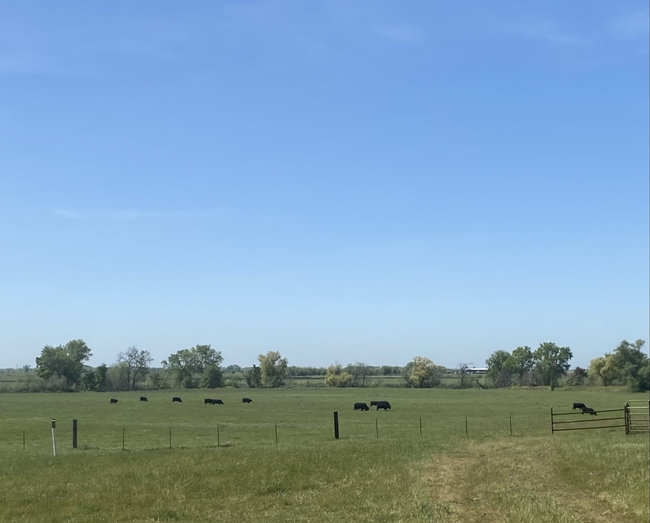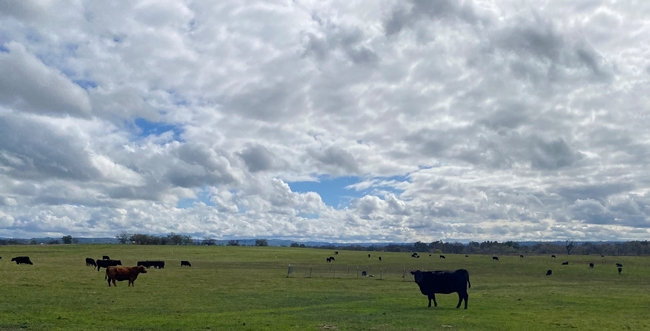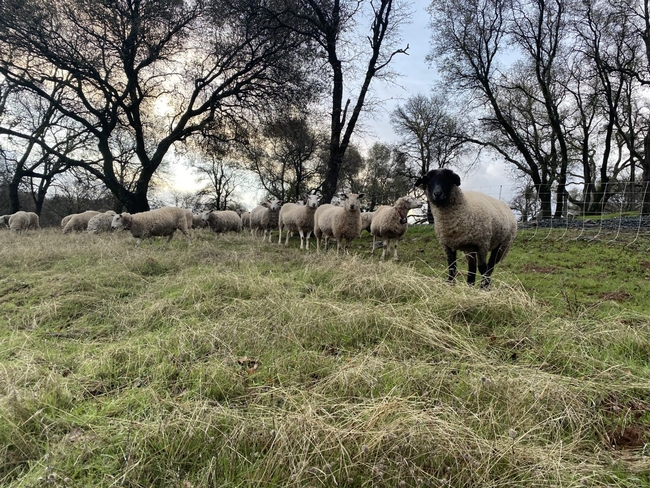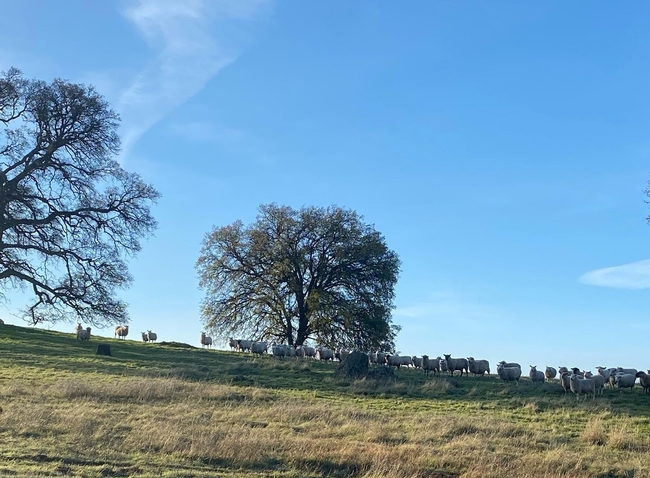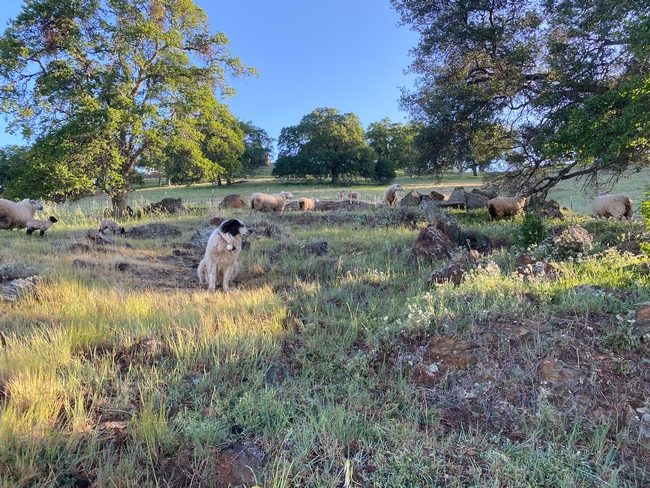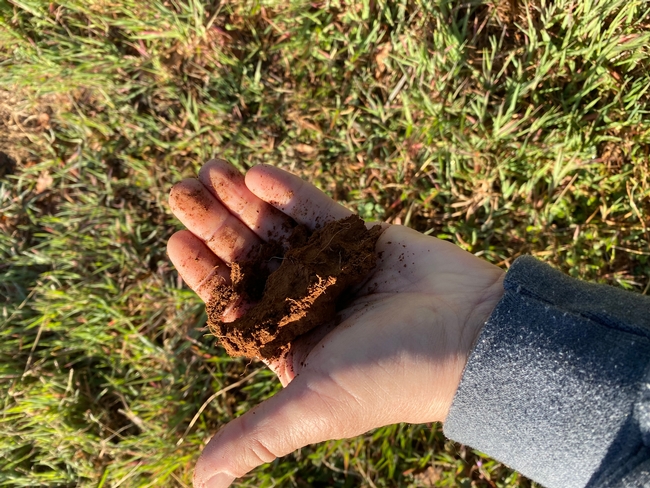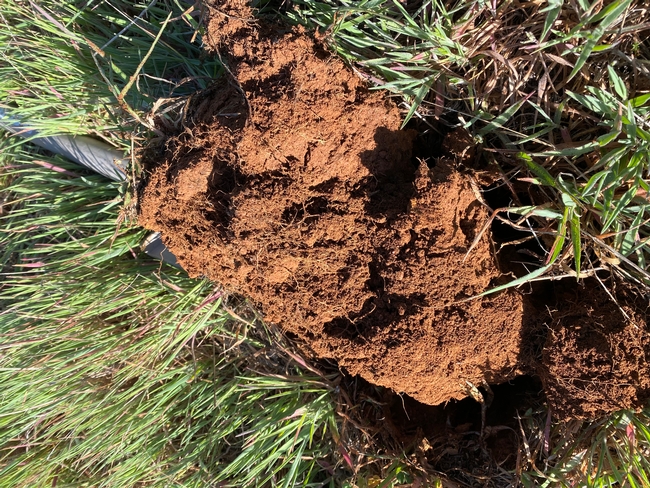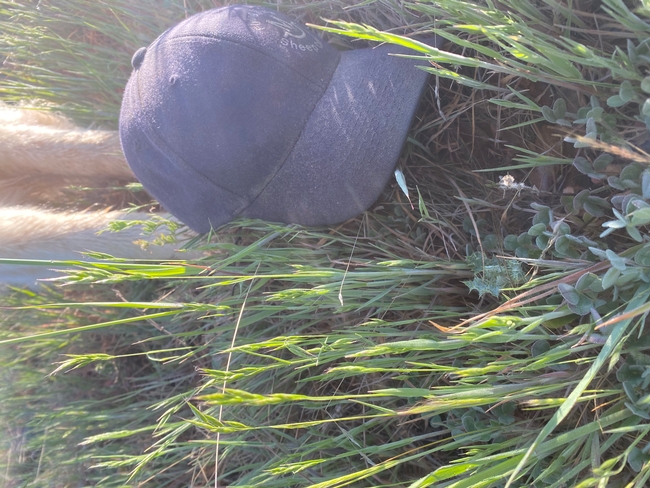- Author: Dan Macon
Fair warning - you might want to file this blog post under the category, "Aren't Ranchers Ever Happy?!" I'll admit - last year, I was worried about warm temperatures, lack of soil moisture, and dried-up stock ponds here in the Sierra Foothills. We'd had the driest January-March ever recorded. Seasonal creeks weren't running. A lack of stock water was limiting access to some pastures for ranchers in my four counties. But thanks to an early start to the grass season (a germinating rain in October) and warmer-than-usual temperatures, followed by rain (at last) in April 2022, we had plenty of grass from Yuba County south through Placer County. According to the Sierra Foothill Research and Extension Centern (SFREC) in Browns Valley (Yuba County), we had 3,806 pounds of forage per acre on May 1, 2022 - 20 percent more than the historical average for that date. Total precipitation from October 2021 through September 2022 was 21.2 inches - about 17 percent lower than the historical average.
The year before that (the 2020-21 water year) was even stranger. That year, SFREC measured just 10.57 inches of precipitation - the driest year since 2000 (drier, even than the worst of the drought years of 2013-2015). Even with the lack of moisture, however, the grass grew - total production was 108 percent of the historical average (3,382 pounds per acre). Once again, most seasonal creeks didn't run. Spring-fed stock water systems failed. But we had grass.
So where do we stand this year? The 2022-23 water year has been phenomenal. We have a near-record snow pack here in the northern Sierra Nevada. The southern Sierra Nevada has the most snow ever recorded! The creeks are running! Ponds are full! The May 2, 2023 Drought Map shows our region of the Sierra Foothills has escaped the drought!
And we're seeing less forage on May 1, 2023, than we saw in either of the last two drought years!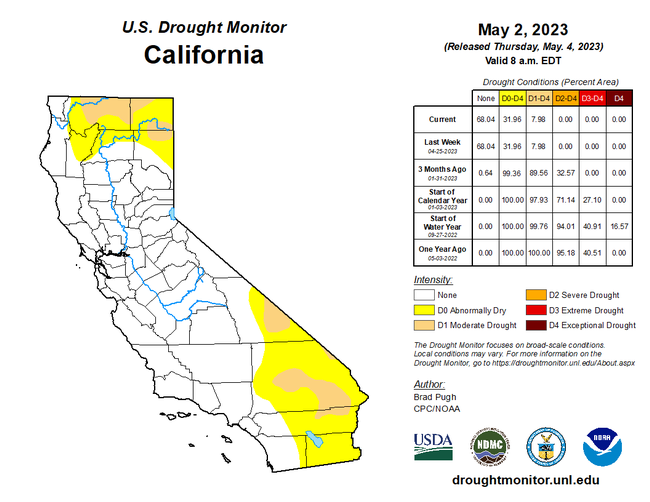
How can this be?! As of today, SFREC has measured just under 35 inches of rain since October 1 - 42 percent more than "normal." But the May 1 forage production figures are below average - just over 3,000 pounds per acre (about 4 percent under the historical average). What's going on here?
Annual rangelands are notoriously complex (in terms of biodiversity, phenology, and productivity). We've known for some time that forage production on our foothill rangelands has as much to do with the timing of precipitation as it does with the total amount. Forage production also depends on adequate soil and air temperature - warmer soils and warmer ambient air temperatures, given adequate moisture, result in greater forage production. Colder temperatures and cloudy days, on the other hand, tend to work against grass growth - as we've seen during this unusually chilly spring in the foothills.
We also know that photo period - the number of daylight hours - plays a role. I've usually thought of this in terms of winter dormancy - in early December, the days are short enough that the grass goes dormant here in the foothills, regardless of moisture or temperature. This year, however, is teaching me that photo period may be equally important in controlling when our rangeland plants flower and set seed. Even though we still have tremendous soil moisture in our rangeland pastures, I'm seeing many of our annual grasses and broadleaf plants "head out" and go to seed - they're just about done growing, despite what seem like favorable conditions. As any rancher will tell you, as soon as our annual forages go to seed, they drop in palatability and nutritional value.
I'll admit, I can't truly bring myself to call this a drought year. I can live with 96% of normal forage production - it's considerably better than the 2100 pounds per acre we had on May 1, 2015 (when I managed the cow herd at SFREC). But this year is an important reminder about how complex our grazing systems truly are. Carrying capacity fluctuates from one year to the next - and from one month to the next. Our job as ranchers is to build enough flexibility into our management systems to allow us to "weather" the valleys in forage production, and benefit from the peaks!
- Author: Dan Macon
Looking back at more than 20 years of precipitation data I've collected since my family moved to Auburn, I can't say that we've ever had an “average” year – that is, we've never had exactly 32.68 inches of rain. Some years, like 2016-17, we measure quite a bit more than average (62.96 inches, to be exact); other years, like 2020-21, we measure less (just 19 inches). Since I started keeping track in 2003, we've had 12 years with less than our average, and 6 years with more than average (the balance – 3 years – have been close to what I would call "normal"). Since 2007, we've experienced several 2-4 year stretches of below average rainfall – including the memorable droughts of 2012-2015 and 2020-2022. Interestingly, though, the trendline on my data suggests that our “average” precipitation has increased slightly since I started keeping track in 2003.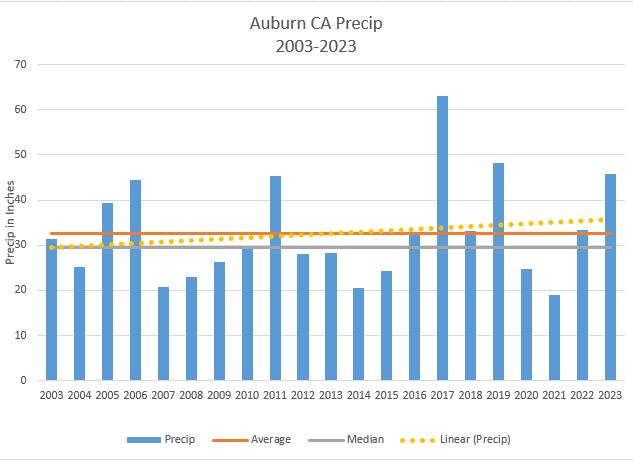
But as anyone who manages livestock on our annual rangelands will tell you, the amount of rainfall we receive is only part of the story when it comes to grass growth – timing and temperature (both soil and air temperature) are key drivers in rangeland forage production. The last two years have provided a stark example!
Think back to mid-March 2022. After an exceptionally wet start to the water year (in October 2021, I measured more than 10 inches of rain), our rangeland forages got off to a great start – they'd germinated in late October and had grown through early December. But in January 2022, the faucet shut off – we received less than 2.5 inches from January 1 through March 31. By some accounts, it was the driest January-March on record. I recall checking soil moisture on the rangelands where our sheep were grazing in mid-March 2022, and finding that we had less than 25% moisture – more like May conditions in the root zone of our rangeland plants.
Despite these dry conditions, however, the UC Sierra Foothill Research and Education Center (SFREC) measured 1,412 pounds of forage per acre on March 1, 2022 (187% of “average” for the date). Rain returned in April 2022, and total forage production at SFREC ended up being 122% of the long term average (just over 3,800 pounds per acre).
In the autumn of 2022, our germinating rain came nearly a month later than the year before – which meant the rangeland forage didn't have much time to grow before the short days and cold temperatures of December forced it into dormancy. A wet and cold December was followed by a wetter (if somewhat warmer) January 2023. While February was slightly drier than “average,” March turned wet and cold again. As of this writing (March 29), we've measured exactly 28 inches of rain at our home place in Auburn since New Year's Day!
Even with all of this moisture, however, forage production at SFREC is lagging significantly behind last year. On March 1, SFREC measured just 619 pounds per acre (less than the long term average for that date of 750 pounds - and less than half of what we had a year ago at this time). As you might expect, soil temperatures followed the cooler air temperatures in late February; cold soils mean little or no forage growth.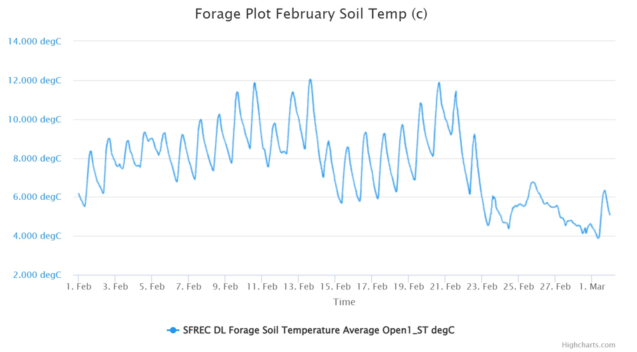
Stated another way, we were in a precipitation drought on this date last year – and we had more forage than “average.” This year is shaping up to be one of the wetter years since I've worked in the foothills – and we're short on feed at the moment (a grass drought). With long days and warmer temperatures coming, I suspect the forage will explode in April, but for now, feed conditions in the foothills are tight!
So how do we manage through this kind of uncertainty? As ranchers, how can we set our stocking rates and production calendars given these wide swings in conditions? During our Working Rangelands Wednesdays webinar series last year, Dr. Leslie Roche (our Cooperative Extension Specialist in Rangeland Management) suggested that while the total amount and seasonable distribution of precipitation are the biggest drivers for annual forage production, specific timing is also critical. November and April precipitation are especially important, based on Dr. Roche's analysis. A statewide collaborative effort is ground-truthing remote sensing technology that will hopefully provide real-time forage production data without needing an army of range technicians clipping plots on a weekly basis.
All of this information will help ranchers make decisions about seasonal and annual adjustments to our stocking rates, but good management will always require careful planning and on-the-fly adjustment to the current year's conditions. While While my colleague Grace Woodmansee (Siskiyou County Livestock and Natural Resources Advisor) developed our Drought Decision Support Tool with drought in mind, I'm realizing there's value in putting together a 12-month forage plan regardless of the conditions! There's no such thing as an average year!
- Author: Dan Macon
After several multi-year droughts over the last decade, I find myself puzzled by the moisture that's been falling from the sky here in Auburn this winter! I find myself even more puzzled by the saturated state of our foothill soils! Over the last several weeks, as I've driven Highway 49 between Auburn and Sonora, I've seen creeks running that haven't flowed in the last several years. After years of worrying about drought and wildfire, I find myself worrying this year about flooding.
In the last two weeks here in Auburn, I've measured more than 11 inches of rain. Our total for the water year (which started October 1) is more than 23 inches - more than we measured in all of 2020-21! And if the 7-day forecast is correct, we'll measure another 6 inches by next Tuesday. In other words, we're wet and going to get wetter!
Over the last two fire seasons, we've implemented a Livestock Pass Program here in our foothill counties (Nevada, Placer, and Yuba). Rather than focusing on evacuating livestock during an active emergency, the program provides training for ranchers to allow access within evacuation zones to care for livestock. While our focus has been on wildfire evacuations, recent flooding in rural parts of Sacramento County reminds me that there may be other types of disasters (natural and otherwise) for which we need to prepare.
During fire season, I carry 5 gallons of water and a fire tool in my pick-up. While I've never actually had to use either of these, I feel better knowing that I have at least some capacity to deal with an emergency. But it's been so long since we've had this kind of winter weather, I've had to think about what I need to carry in my truck this winter.
Unlike the Sacramento Valley (where all of this water we're seeing in the foothills eventually winds up), our region typically doesn't face total inundation. That said, rainfall like we've experienced in the last several weeks makes small creeks run and bigger creeks rage - sometimes across the roads I use to access our sheep before and after work. And the combination of saturated soils, high winds, and drought-weakened trees can cause problems, as well - with fencelines and power lines alike. Since we use portable electro-net fencing, I spend a few extra minutes each day walking the fence to make sure nothing has blown over. This week, with more wind and rain, I put my chainsaw and shovel in my truck.
Someone asked me this week how my sheep chores change in weather like this. I jokingly answered that not much changes, other than the fact that I get wet while doing them! But that's not entirely true - I find that my grazing planning does change when we're in a wet pattern like this. Since we won't be lambing for another 6-7 weeks, I'm not too worried about making sure there's shelter from wind and rain - the ewes are pretty hardy at this stage. But I do adhere to the old shepherd's adage that the best shelter for sheep is a belly full of grass. Just like I try to keep my gas tank at least half full during fire season, I try to make sure the sheep always have enough feed to be ok if I can't get to the paddock for a day or two.
And with the rain we've had so far, we seem to have enough grass! For now, anyway!
- Author: Dan Macon
I suppose my obsession with the weather apps on my smartphone started during the 2013-2014 drought. I've always been a weather geek, but during that dry spell, I found myself constantly checking multiple apps to see if one held more hope for moisture than another. That fall, I was lambing out a large commercial flock of sheep in the California Delta. Later that winter, I went to work as the beef herdsman at UC's Sierra Foothill Research and Extension Center (SFREC). Grass - and the moisture to grow it - was never far from front of mind. And as a dry, cold December stretched into an even drier January, we reduced our sheep numbers (both on the outfit I was working for, and in our own flock). As the weather stayed dry that spring, we hunted every blade of grass we could find at SFREC. And looking at the plethora of weather apps that are still on my phone today, I find myself getting nervous about this fall and winter... again!
Based on that 2013-2014 experience, I've become much more focused on my grazing planning. For me, this involves multiple timeframes - I'm thinking about where our sheep will be able to graze over the next 3-4 weeks, as well as what our forage resources might look like into late January and February (during late gestation for our ewes). Beyond lambing, I start thinking about how much irrigated pasture we'll have available to us next summer. Based on this planning, I can adjust when and where we move the sheep in the short term. In the long term, I can adjust our flock size to make sure our forage demand balances with our forage supply.
Setting our stocking rate, then, becomes a critical part of our drought strategy. Do we stock for an "average" year (whatever that is)? Do we stock for a good year with the understanding that we'll need to sell animals if our grass doesn't come on? Or do we stock conservatively - for the worst years - and adjust by bringing in more animals if we're pleasantly surprised by rainfall and grass? My friend and colleague Josh Davy, who runs cows in the Sacramento Valley, says, "My starting point is to set my stocking rate so that I can survive December and January - those are the toughest months, feed-wise."
We can also affect our stocking rate simply through our management calendar. We try to matching our lambing period (which is also our period of highest forage demand) with the onset of rapid grass growth (usually in late February or early March). Most years, this works out - although the incredibly dry period we had in the first quarter of 2022 tested my resolve. This also allows us to reduce our stocking rate as the forage dries out in late spring and summer - by simply selling our lambs.
All of this brings me back to THIS fall and getting nervous. We had a germinating rain in mid September - and we've had no precipitation since here in Auburn. The grass that germinated after that first rain has stopped growing (and in some cases, died). Our irrigation water shut off on October 15, which means our irrigated pasture won't grow much more forage unless we get some rain. Last night, I mapped out our grazing for the next month - I think we'll have enough grass to stay on our irrigated pasture until the first weekend of December.
After that, we'll see where we are - if we get rain in the next 7-10 days (and there appears to be some in our forecast - depending on the app I'm looking at!), we'll have some green forage on our lower elevation annual rangelands by the time we move the sheep. If we don't get any rain, we'll need to provide supplemental protein to allow the ewes to digest the dry forage we saved as a buffer. At this point, I'm reluctant to sell any bred ewes - we've already invested in next year's lamb crop.
During last year's dry spell, Siskiyou County Livestock and Natural Resources Advisor, Grace Woodmansee and I developed a drought decision support tool to help ranchers think about their short- and long-term drought strategies. The core of this tool is a 12-month forage calendar - a tool to help you think about potential gaps in your forage supply through the course of the year. This year, I've found it helpful to revisit my forage projections on a regular basis - grass that seemed plentiful after last December suddenly looked short in mid-March. Similarly, what looked to be a dismal grass year in March turned around with April's storms. The process of planning - of looking ahead at our grass - helped make my decision-making process more rational. Had April remained dry, I would have sold sheep; since it turned wet, I was able to maintain my numbers. My forage calendar, in other words, allowed me to establish some realistic key dates for decision-making.
Now, if you'll excuse me, I need to check a few more weather apps - one of them is bound to have an optimistic forecast for next week!
- Author: Dan Macon
I invite you to travel back in time with me - clear back to late October 2021! We'd measured more than 10 inches of rain in Auburn, and we could see the first green shoots of grass emerging through the dry forage. While November was slightly disappointing from a precipitation perspective, we measured more than 12 inches of rain in December - capped off by a crazy, wet, and cold storm just before the first of the year. I'm sure most of us were celebrating what looked like a great feed year when we rang in 2022. But then the spigot shut off - here in Auburn, we've measured just 1.77 inches of rain since January 1 - the driest start to the calendar year in the 20+ years I've kept records. Combining this lack of moisture with warmer-than-normal temperatures and unusual (at least for winter) dry north wind, we are squarely back in drought conditions. In many ways, we seem to be experiencing a more severe drought than last year, at least on our foothill annual rangelands.
Ranchers know that drought is more than just a lack of precipitation. Low rainfall years, provided the storms come at the right time, can produce above-average forage. This year, however, the warm temperatures have brought oaks and other vegetation out of dormancy earlier than normal - this early onset of the growing season in our oak woodlands has increasedevapotranspiration (or soil-water demand). The north winds haven't helped. Before we received an inch of rain on March 14-15, I checked soil moisture in Auburn - and found it to be less than 20% (more like May than March). The rain gave us a short boost, but by the end of last week, soil moisture was back around 25%.
Ourrangeland vegetation reflects these poor growing conditions. Our annual grasses andforbs, by definition, must produce seed every year. In dry conditions, this means that they reproduce and turn brown early and at a shorter stature. Where our sheep are grazing just west of Auburn, I've seen soft chess and annualryegrass headed out this week - a good 30 days early. In a good year, the soft chess will be as much as 18 inches tall; this year, it's done growing at 6 inches. Many of our importantbroadleaf forage plants are maturing equally early - I'm seeing vetch dying back on our shallower soils, and thefilaree is already in the late bloom stage, as well.
These are all red flags from a forage quantity perspective - shorter feed this spring means less residual feed to return to next fall. But early maturity also compresses our forage quality window. Many of us expect a 45-60 day period when we have high quality forage on our annual rangelands - and we set our production calendars accordingly. As these grasses and forbs mature, they decline in quality - providing less protein and energy to our grazing animals. They also become less palatable - in other words, they don't taste as good and they don't provide as much nutrition. The graph below demonstrates that crude protein levels in annual grasses drop below cow maintenance levels between the late flowering and maintenance stages (which we're approaching). If we're trying to put weight on animals, protein levels are deficient by the time we reach the early flowering stage. For more information, check out this ANR Publication (Annual Rangeland Forage Quality).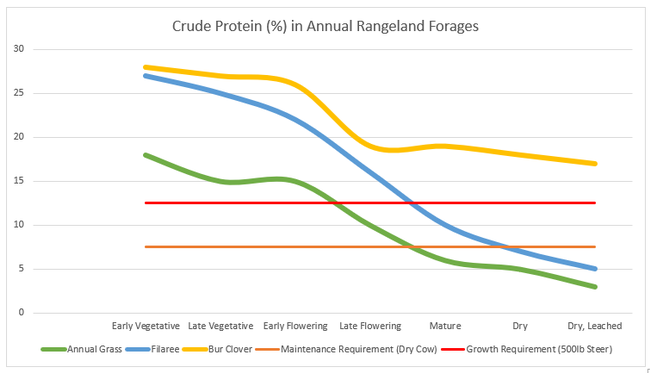
We're still hopeful that the significant snow pack we built up in December will mean we'll have adequate irrigation water here in the foothills - other regions in the state aren't so fortunate. Given the exceptionally dry conditions, however, I expect we'll need to make at least 2 irrigation rotations over our irrigated pastures to rebuild soil moisture and start growing forage. For us, this means we won't start regrowing irrigated pasture forage following our first graze periods until the end of May.
In light of these impacts, what are some of the strategies we should consider going forward? The basic premise of most drought management strategies is to increase our forage supply (by buying hay or other feed, irrigated early, or leasing new pasture) or reducing our forage demand (by selling livestock or weaning early). Check out our Drought Decision Making Tool for Ranchers for information on how to analyze the economics of these options! This page also includes a new bulletin on early weaning.
As far along as our annual rangeland vegetation is today, another rain won't do us much good - other than perhaps grow some summer annual weeds that may have some grazing value. Rain wouldgive our irrigated pastures a boost, however - at least here in the foothills. We'll see what April brings!


